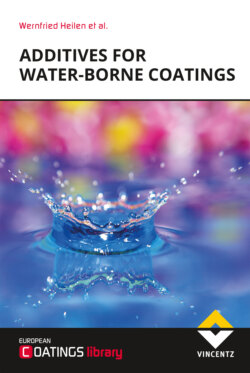Читать книгу Additives for Waterborne Coatings - et al. - Страница 89
На сайте Литреса книга снята с продажи.
3.5.5Recommended tests for evaluating defoamers
ОглавлениеSince defoaming characteristics are influenced by the conditions during manufacturing and application of the paint, it is recommended that the test method replicate those conditions as closely as possible [12]. The evaluation should also include an assessment of surface defects that are caused by the defoamer under test.
The foaming behavior of dilute water-borne emulsions is tested by incorporating air into the system with a high-speed stirrer and then comparing the efficiency of each defoamer via the volume of foam created by the stirring process.
This test is performed quickly but it must be considered a preliminary test only.
The stir-flow test is a more meaningful method for evaluating defoamer strengths and possible surface defects at the same time. It consists in pouring the freshly stirred sample onto an inclined glass plate or stretched polyester film and then visually assessing the dried film from the two aspects above.
The roller test, which simulates real-life application of paints applied by roller, is used for roller-applied water-borne emulsion paints, mainly in the architectural coatings market segment.
Surface defects caused by foam, and incompatibilities or air occlusions in the coating, can be assessed on the dried paint film. The film is illuminated from behind to reveal even the smallest foam bubbles.
The emulsion-based paint should be tested approx. 24 hours after production and again after storage for, e.g., 4 weeks at 50 °C, as defoamers can lose effectiveness over time.
